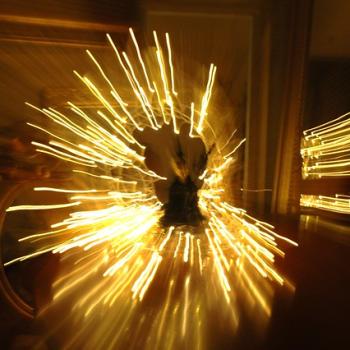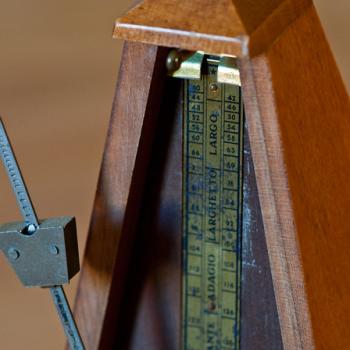
The Language of Stillness
Some of us are particularly perplexed about the idea of listening to sacred stillness. Is it possible to distinguish the language of stillness from all the other languages we hear each day? Does all stillness use the same language?
It is a challenge for many of us to sort out sacred stillness from the cacophony of distractions.
What does stillness sound like? How can we become familiar with the language of stillness?
We may feel it takes certain gifts and skills for us to recognize the language of stillness. Some of us seem to be born with an innate ability for languages and the language of stillness might work the same way.
Can we learn to understand and appreciate stillness if we were not born with a gift for its language?
Many of us do not know whether we can understand how stillness speaks to us. We have not really tried to experience stillness and understand what it has to tell us. All we know is stillness is speaking an exotic language and we experience it as an insurmountable obstacle.
Stillness talks to us in a language which resonates with us more intimately than words.
Our effort to understand the language of stillness begins with listening. We start by being open to what stillness has to say to us.
When we began to learn our own language we started by listening to words people used around us. Their inflections and the tones in their voices helped us hear distinct messages.
In the same way when we study another language many of us take a conversational approach. We begin to spend time listening to sacred stillness and becoming receptive to its rhythms and patterns.
Our ability to understand a language depends on how we practice using it.
Hearing the Language of Stillness
If we have ever walked into an area where several languages are being spoken we know how hard it can be to hear them. The clear, distinct language of many personal conversations becomes lost in overall background noise.
It helps us learn to appreciate the language of stillness when we can set aside the background noise. Each day is filled with overlapping distractions and mingling languages.
When we are trying to practice hearing the language of stillness it helps us to be able to pay attention.
We practice listening to sacred stillness by allowing the voices and languages which distract us to dissipate. Many of us schedule time each day to pay attention to the language of stillness.
As we let go of distractions they seem to settle to the bottom of stillness. They do not disappear, but we choose not to pay attention to them for a period of time.
The languages of all the conversations which distract us fall away and we can pay attention to stillness.
We practice and the voice of stillness becomes a clearer part of what we hear. As we listen we begin to hear the language of stillness.
Some of us might have a difficult time knowing when we can hear stillness and when we cannot.
There are times of listening to sacred stillness when our experience tells us we have heard nothing. The language of stillness may have communicated to us more intimately than we realize. It may only be later, after the time we believe we are listening, we can hear the stillness.
Our contemplative practices help us learn to hear the language of stillness. As we practice, over time, we begin to hear what stillness is telling us.
Hearing the language of stillness is our next step toward interpreting it.
Appreciating the Language of Stillness
Many of us have little or no experience hearing the language of stillness. Stillness is almost completely removed from our lives. We no longer recognize the sound of stillness or the language it speaks.
Even when we have experience with the language of stillness it can be easy to lose our understanding.
French is the language I studied when I was in high school and college. I participated in a competition in high school for which I memorized and recited a poem in French.
It has been a long time since I heard anyone speak French. Every once in a while I will watch a movie in French or in which some of the characters speak French. It is much more likely I will hear someone speaking Spanish or Mandarin or Korean in my everyday life.
I can usually still recognize French when I hear it but I do not really understand it. My accent is not even as good as it was in high school or college. I doubt most people who speak French would understand what I was trying to say.
We grow in appreciation for the language of stillness as we practice listening to sacred stillness.
Practicing the Language of Stillness
Our contemplative practices introduce us to the language of stillness. We take time to listen to sacred stillness and hear its language. As we become more familiar with the language of stillness we begin to appreciate it.
Slowly, as we practice, the language of stillness becomes part of us and how we live our lives. Our listening plants seeds of stillness which take root within us.
We listen and the sacred stillness all around us and within us encourages us to continue practicing. Our lives become fluent in the language of stillness.
As we sit watching the ripples on the surface of the stillness we recognize there is something deeper. Sacred stillness draws us in and teaches us its language.
We hear the most intimate parts of the stories we share in the language of stillness.
There is time for us to sit and listen, to hear and appreciate. We practice the language of stillness as the stillness washes over us.
When can we grow more familiar with the language of stillness today?
How will we remember and appreciate the beauty of the language of stillness this week?
[Image by warrick1]
Greg Richardson is a spiritual life mentor and coach in Southern California. He is a recovering attorney and a lay Oblate with New Camaldoli Hermitage near Big Sur, California. Greg’s website is StrategicMonk.com, and his email address is [email protected].












